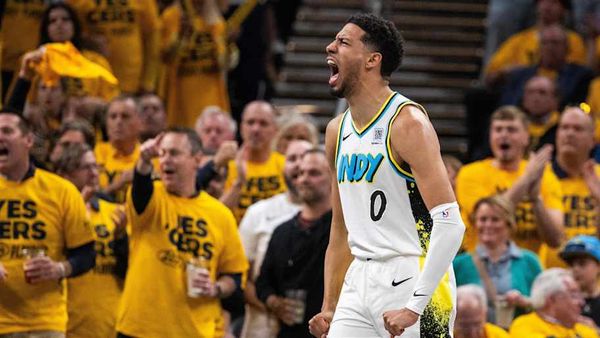Last decade, vodka got sloppy. The classically clear, odorless spirit turned into a palette of artificially sweetened and flavored Frankensteins, enabling well-drink bartenders to concoct headache-inducing cocktails for people with questionable state IDs (orange cranberry whip, anyone?).
That’s not how vodka should be. At its best, vodka should be enjoyable on its own, on a rock, or as the base of a crisp cocktail for those not inclined toward the herbaceous bite of a gin martini or Tom Collins. Bill Dessel, owner of Billy’s, a bistro in Barrington, Rhode Island, agrees. Over and over, he saw customers order a sugary flavored vodka drink then switch to light beer, conscious of the alcohol and calories a sweet cocktail brings. So Dessel and college buddy Tom McGowan decided to develop a low-alcohol vodka, recruiting former New England Patriot Matt Light to round out the business side.
The result is KEEL Vodka, which clocks in at 23.8 percent alcohol, compared to 40 percent or more typically in a vodka. Having the idea was one thing, getting it approved was another —as Steven Soderbergh can tell you, alcohol rules are stringent and confusing.
“The government… basically said you can’t make a light vodka, it doesn’t exist,” Dessel wrote me in an email. “That was our motivation. Not just to create a brand but to create a whole new category of vodka.”
It took two years for KEEL to get their permit and their label – on which they disclose the ingredients to appeal to health-conscious consumers – approved. “Getting the ingredients on the bottle was unheard of in the government’s mind,” Dessel wrote. “But, really embracing the challenge and asking for help within a very bureaucratic operation, we were able to accomplish the task and were able to launch the start of what we believe will become a new category [light vodka].”
A problem with “lite” drinks generally is they often sacrifice flavor and mouthfeel, but that’s not what I see with KEEL. It still provides an authentic vodka taste and weight despite being lower in alcohol – it probably would sacrifice that if it were lower than 24 percent alcohol. While lower than other vodkas or typical cocktail base spirits, but it’s still high enough to be around a typical sake or fruit liqueur.
It also has a stamp of approval from Chester Brandes, former president and CEO of Imperial Brands Inc., who recently joined Keel’s board of directors. “I’m a vodka drinker and when I tried KEEL, I immediately knew they were on to something,” says Brandes. He knows what he’s talking about – an industry veteran with 40 years’ experience, Brandes has led brands like Bulldog Gin and Sobieski Vodka to record growth, not to mention serving as president and CEO of Finlandia Vodka Americas, helping to reposition it among leading premium imported vodkas in the U.S. “With KEEL you can have the satisfaction of enjoying a martini or two without the effects of the heavy alcohol content in other vodkas.”
Tom Flocco, president and COO of Utz Quality Foods and former CEO of Beam Suntory and Ari Soroken/CFO of BAI Brands recently joined Brandes on the board, lending further credence to the idea that a new category is in the offing.
“There is no reason spirits must be 80 proof,” says Soroken, who has deep experience providing executive leadership for venture-backed companies and start-ups. “Having a spirit lower in alcohol provides retailers with a greater margin if they sell more drinks and allows people to consume more of it, should they choose, and enjoy the moment without dulling their senses or palate due to over consumption.”
There’s little doubt the KEEL makers are onto a trend, as the success of Skinny Girl cocktails and other calorie-light drinks shows. Interestingly, it appears there may be generational factors at work too, as studies show people in their early 20s are drinking less alcohol now than Millennials, GenXers and Boomers did at the same age, KEEL says, citing a 2018 study from Berenberg Research.
So far, KEEL has been doing well in the market. Since 2016, it has expanded into 11 states, including Colorado, Florida, Tennessee, Texas, New Jersey, and New York, in addition to its New England base (KEEL light lemonades have been on tap at the Patriots’ Gillette Stadium games, for instance). The company says they were told it would take two years to sell their first batch of inventory and ended up going through it in about three months.
That quick success begs the question of expanding the brand into other spirits. “In other parts of the world, they’ve already come out with a light Scotch so it’s something that is definitely on our radar, but for now we are choosing to focus our attention on KEEL Vodka,” Dessel wrote. Meantime, the focus is on launching KEEL sparkling, a vodka soda in a can. But I’ve got my fingers crossed for a gin.
Cocktail: The Even Keel
1.5 oz KEEL Vodka
4 oz. soda water
1 oz. organic lemonade
0.5 oz. Elderflower liqueur (optional, but I recommend it)
- Combine all ingredients in a tall glass, add ice, and give a quick stir.
- Mix it by the glass or by the pitcher – sure to be a crowd-pleaser.
- Brighten up your creation with a slice of lemon and sprig of fresh mint.







